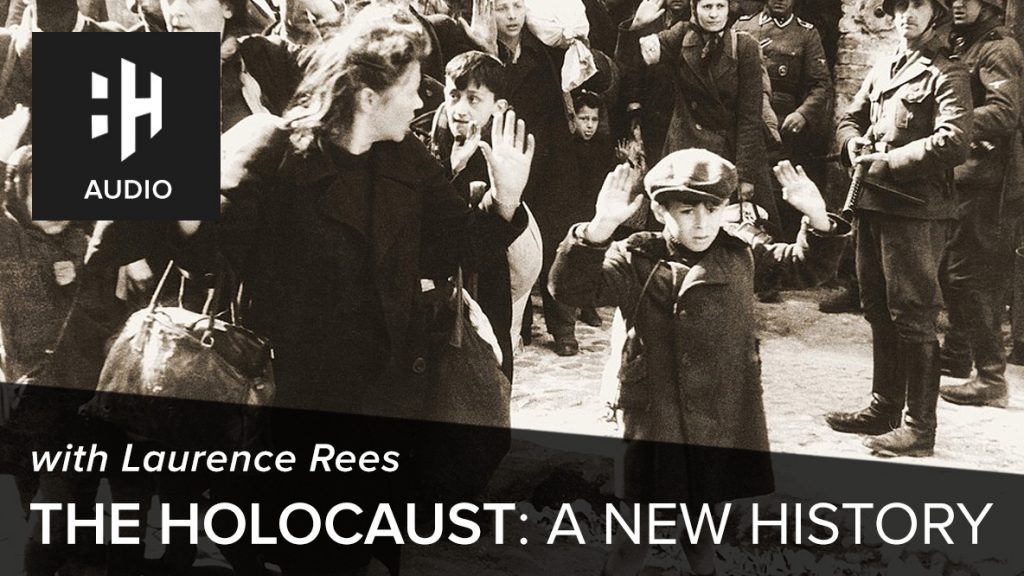
Concentration camps are today the most potent symbol of the Holocaust and Hitler’s attempts to wipe out all Jews within reach. But the Nazis’ very first concentration camps were actually established for a different purpose.
The first camps
After becoming chancellor of Germany in January 1933, Hitler wasted little time in laying the foundations for a brutal authoritarian regime. The Nazis immediately launched sweeping arrests, particularly targeting Communists and others deemed to be political opponents.
By the end of the year, more than 200,000 political opponents had been arrested. Whilst many were sent to typical prisons, many others were held outside the law in makeshift detention centres that became known as concentration camps.
The first of these camps opened just two months after Hitler became chancellor in an old munitions factory in Dachau, north-west of Munich. The Nazis’ foremost security agency, the SS, then went on to establish similar camps across Germany.

Himmler inspects Dachau in May 1936. Credit: Bundesarchiv, Bild 152-11-12 / CC-BY-SA 3.0
In 1934, SS leader Heinrich Himmler centralised control of these camps and their prisoners under an agency called the Inspectorate of Concentration Camps.
By the start of World War Two, there were six concentration camps in operation in what was then known as the Greater German Reich: Dachau, Sachsenhausen, Buchenwald, Flossenbürg, Mauthausen and Ravensbrück.
The Nazis’ targets
The majority of the camps’ early prisoners were political opponents and included everyone from Social Democrats and Communists to liberals, the clergy and anyone else considered to be holding anti-Nazi beliefs. In 1933, approximately five per cent of prisoners were Jews.
Increasingly, however, the camps were used to detain non-political prisoners too.
 Listen Now
Listen Now
From the mid-1930s, the so-called Criminal Police Detective agencies began issuing preventative arrest orders to people whose behaviour was regarded as criminal – or potentially criminal – but not political. But the Nazis’ notion of “criminal” was very broad and highly subjective, and included anyone deemed to be a danger to German society and the German “race” in any way.
This meant that anyone who did not fit with the Nazi ideal of a German was at risk of being arrested. Often those detained were either homosexual, considered to be “asocial”, or a member of an ethnic minority group. Even those acquitted of criminal wrongdoing or who had been released from standard prisons were often still liable to be detained.
How many people were detained in the camps?
It is estimated that between 1933 and 1934 there were approximately 100,000 people being held in the Nazis’ makeshift camps.
However, a year after the camps were first established, most of the political opponents being held in them were referred to the state penal system. As a result, by October 1934, there were only around 2,400 prisoners in concentration camps.
 Watch Now
Watch NowBut this number began to go up again as the Nazis broadened the scope of who they were detaining. By November 1936 there were 4,700 people being held in concentration camps. In March 1937, around 2,000 ex-convicts were sent to the camps and by the end of the year the makeshift centres were holding around 7,700 prisoners.
Then, in 1938, the Nazis intensified their anti-Semitic racial policies. On 9 November, the SA and some German citizens carried out the pogrom against Jews known as “Kristallnacht” (Night of Broken Glass) after the windows of Jewish business and other properties that were smashed. During the attack, approximately 26,000 Jewish men were rounded up and sent to concentration camps.
By September 1939, it is estimated that around 21,000 people were being held in the camps.
What happened to the first prisoners?
 Watch Now
Watch Now
Hans Beimler, a Communist politician, was taken to Dachau in April 1933. After escaping to the USSR in May 1933, he published one of the first eyewitness accounts of the concentration camps, including some of the words spoken to him by a guard named Hans Steinbrenner:
“So, Beimler, how much longer do you propose to burden the human race with your existence? I’ve made it clear to you before that in today’s society, in Nazi Germany, you are superfluous. I’ll not stand idly by for much longer.”
Beimler’s account alludes to the horrific treatment that prisoners faced. Verbal and physical abuse was common, including beatings by guard and gruelling forced labour. Some guards even forced prisoners to commit suicide or murdered prisoners themselves, passing their deaths off as suicides to prevent investigations.














